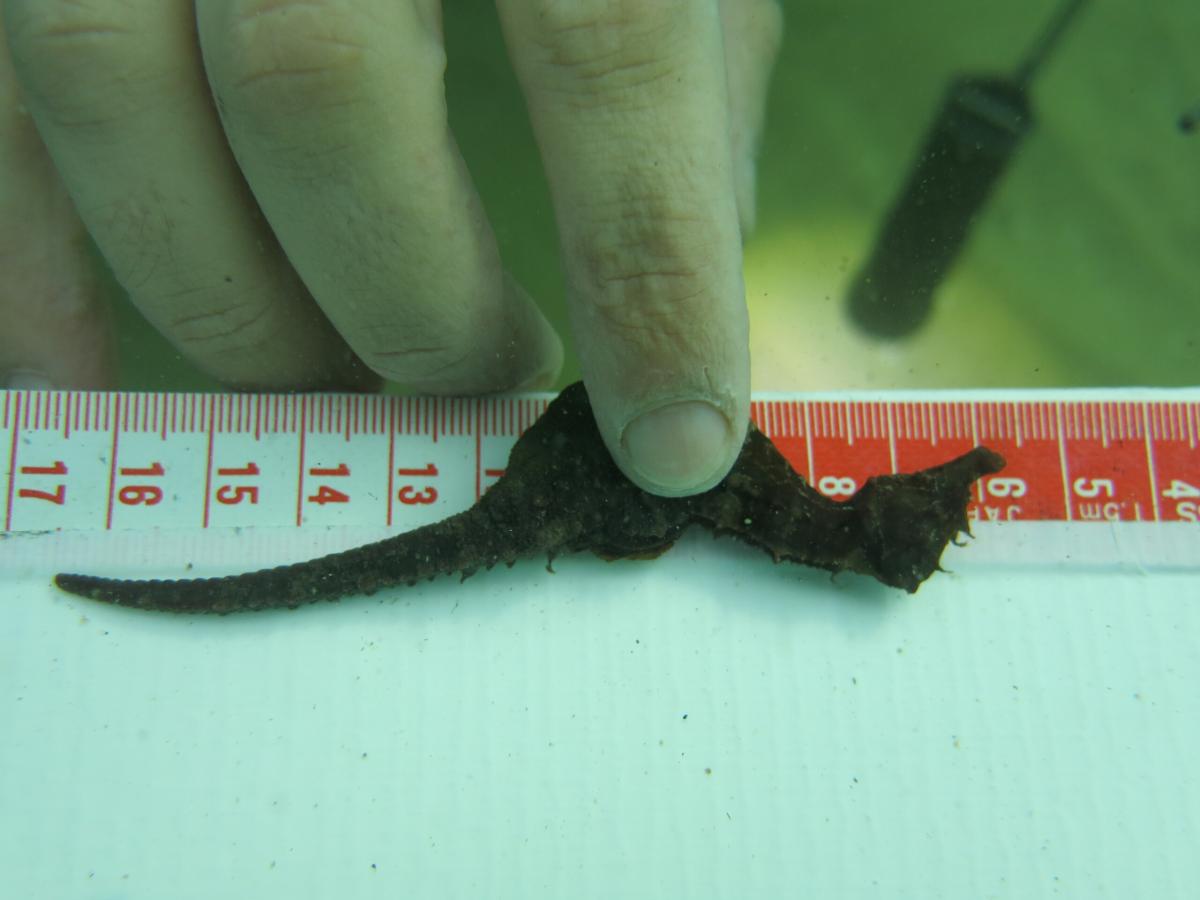Gonçalo Silva in an interview with Green Efact
It is in the calm but threatened waters of Almada's riverside coast that researcher Gonçalo Silva has focused his scientific and environmental mission. Heading up the CavALMAR project - a partnership between MARE, ISPA and Almada City Council - Gonçalo Silva led the first major ecological survey of marine biodiversity along the municipality's 10 km of waterfront, from Cova do Vapor to Alfeite. 
Between 2022 and 2023, nine areas were identified with the presence of syngnathids, namely seahorses and seals - rare species that are extremely sensitive to changes in their habitat. The data is surprising: 29 long-nosed seahorses (Hippocampus guttulatus), 7 common seahorses (Hippocampus hippocampus) and 6 seals (Syngnathus acus), with Trafaria Bay standing out as a true refuge for these species.
“These figures are high for these species, as they are rare, difficult to detect, not very mobile and occur occasionally in very restricted areas,” Gonçalo Silva explained to Green Efact.
But it's not all good news. The state of the habitats where these species survive is alarming. During the study, Gonçalo Silva's team came across heavily degraded areas full of garbage: fishing nets, nylon, cans, bottles, tires, hooks, masks... and even supermarket trolleys.
“In addition to all this garbage, seahorse populations on the south bank are still subject to other threats such as illegal fishing, pollution, underwater noise and habitat destruction,” the researcher warns.
Despite the existence of national legislation that recognizes the vulnerability of seahorses - such as Decree-Law no. 38/2021 - Gonçalo Silva stresses that most of the habitat of these species remains unprotected or poorly managed. In Portugal, only around 20% of the areas where seahorses occur are in marine protected areas, and even these only offer a level of protection considered low to moderate.
The data collected by the CavALMAR project, together with other ongoing research, has led to a list of concrete recommendations for preserving the biodiversity of Almada's riverside area. Among the measures proposed are:
- Continuous scientific monitoring;
- Creation of ecological corridors and restoration zones;
- Systematic underwater cleaning actions;
- Involvement of local communities;
- Educational and awareness-raising programs;
- Definition of an integrated management strategy for Trafaria Bay;
- Creation of a seahorse recovery and interpretation center.
The researcher believes that seahorses can play an essential role in people's emotional connection to the aquatic environment."In fact, seahorses themselves are an opportunity not only to promote environmental rehabilitation, but also urban and social rehabilitation. It is through flagship species like seahorses that we can create and strengthen bonds of affection between people and the aquatic environment, motivating them to preserve it.”
Today, the researcher continues to work with local authorities to ensure that conservation is not forgotten in the face of new projects planned for the area, such as the construction of a fishing port in Trafaria.
(Photo by Gonçalo Silva)
